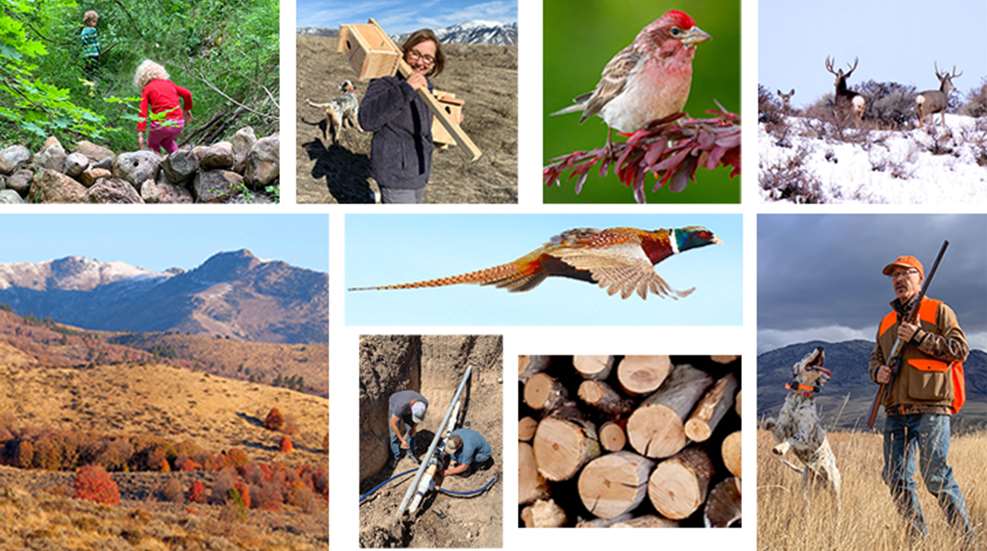
The deer will feed in your alfalfa field on May evenings, the cornfield on snowy January mornings. Pheasants and turkeys will scratch and forage behind them while rusty fox squirrels scold and flick their tails from the fence posts bordering your woods.
And you’ll watch it all from the camp chair on your deck just 300 yards away, surrounded by bluebirds and redbirds and particolored wildflowers edging the garden with its bounty of corn, beans, squash, carrots, potatoes and tomatoes.
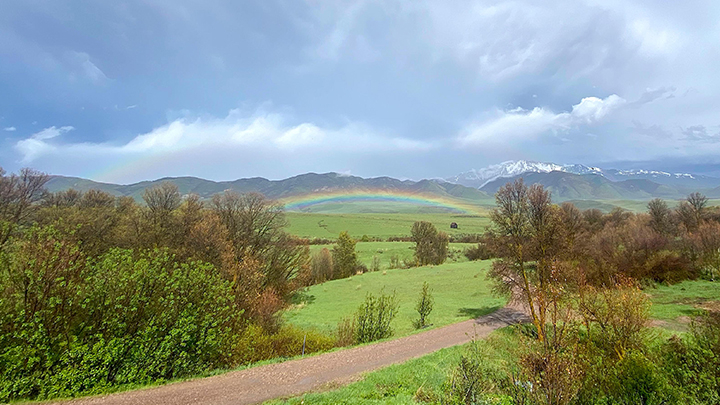
This is the classic American Dream, the powerful longing for land that pulled a million hungry peasants across angry oceans, desiccated deserts, bloody forests. Land. Spreading out so wild and free. No more bowing and stooping to royalty. The men and women who own their land are kings and queens of all they survey.
Land ownership is one of the greatest freedoms in the U.S.A., ranking right up there with speech and the right to bear arms. With your own acres you can grow your own food, raise your own livestock, attract and increase wildlife, cut firewood, erect solar panels, build shooting ranges … . Finding that land—the right combination of location, soils, precipitation, climate, legislative districts and more—that’s the tough part.
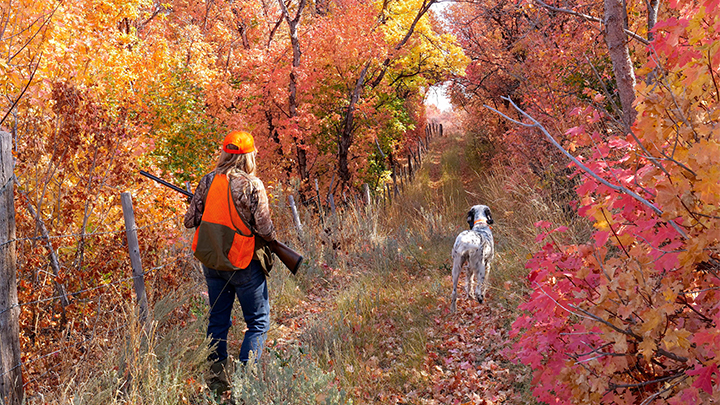
Definition of Desire
Before you slap a down payment on 40 acres of dirt, take the time to define and prioritize your wants and needs. My wife and I did this for years before finally finding and settling on our little ranch. And we still got lucky. But luck comes easier when you know what you want, what you can afford ... and what you’re willing to live without.
Predictably we wanted everything. Ground so large and isolated that we couldn’t see or hear neighbors, yet within a mile or two of paved roads connecting to essential services (grocery stores, emergency medical care, gas and oil, lumber and hardware stores) no more than a half hour out. Picky picky, eh?
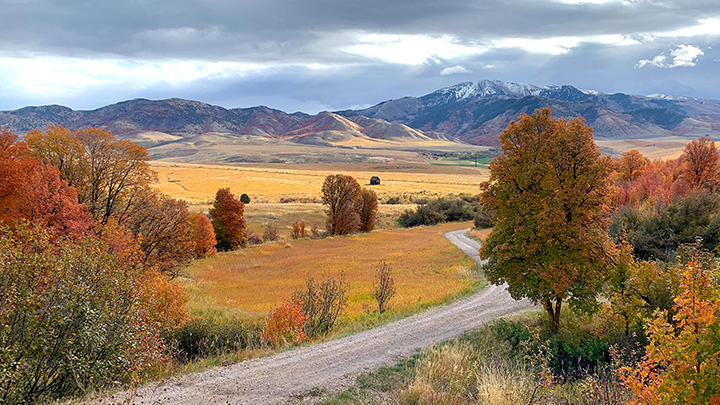
And that was just the start. We wanted woods, meadows, fields, streams, ponds and the potential for as many species of wildlife as we could get, especially species we could hunt. Predictably, we didn’t get it all. One rarely does. But defining and prioritizing objectives is an important start.
Climate and Region
Most of us have a pretty good idea we want to live in the Northeast or Southwest or … . But do we want high elevation or low? Coniferous forest, deciduous woods, farmland, grassland, desert, tundra? Do we want snow, deep cold, lots of rain or mostly sunny skies? Are we willing to put up with drought and dust or frequent high winds?
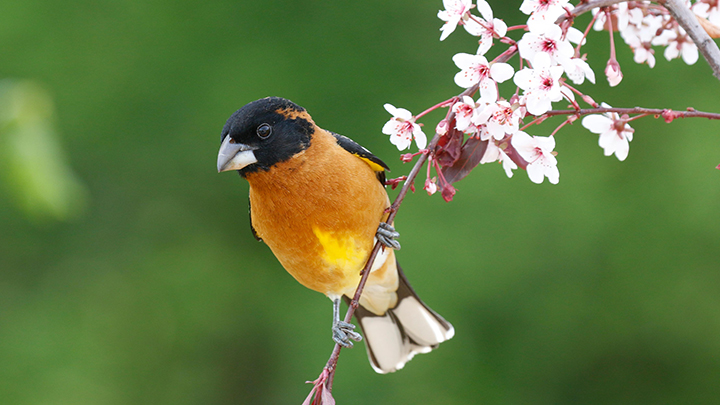
While assessing climate, terrain and habitats, consider politics and cultures, too. Old, insular communities can be unwelcoming. Some states and counties are aggressively anti-gun and even anti-hunting. Some are overwhelmingly progressive, conservative or libertarian. Some assess state income taxes, some do not.
After considering these overarching conditions, keep potential neighbors in mind. Good fences make good neighbors, but good people make even better neighbors. Visit with as many locals in your targeted area as you can. Hit local coffee shops, cafes, stores. Make small talk. You aren’t going to hear about a nasty neighbor from the sellers or their agent, but other landowners nearby might spill the beans.
Sadly, neighbors can come and go, a great one retiring to Argentina while a troublesome new one moves in. An easy-going, reasonable neighbor can suddenly go ballistic over some perceived injustice, in which case your best insulation is space. Anchoring your house 100 yards from the neighbor’s beats 10 yards. A thousand yards beats 100 yards. A ridge or belt of dense woods can provide additional softening of visual and audial disturbance. And there’s always the local sheriff.
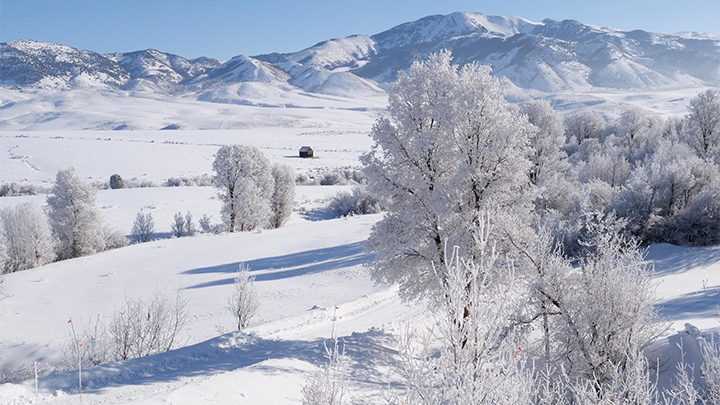
A border option with fewer problems could be public land. Bordering national forest could assure you won’t have to deal with a clan of wild-eyed, nocturnal party animals. Then again, heavy recreational traffic could introduce countless, clueless trespassers or, worse, drug runners, even pot growers violently defensive of their illegal backwoods plantations.
Do your research.
Family Ties
I have several friends eager to move rural—but their mates won’t leave the old homestead. For families used to seeing kin nearly daily, 30 miles can seem a bridge too far. But time may be on your side. Instead of distance, calculate the time required to travel from home to home. Stoplights and traffic in the city can make a 4-mile trip longer than a 15-mile drive from ranch to town.
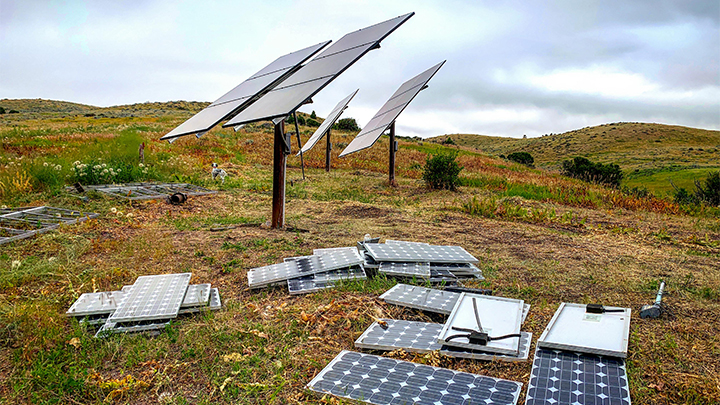
You can also train yourselves to cut the apron strings. Go a day or two without interacting face-to-face with close friends and family. Use more phone and computer links. Take a week’s vacation. Humans have been migrating for millennia … . My grandfather escaped Communist Stalin’s purge in Russia to start his new family in the U.S.A. I don’t think he boated back to the Volga for family Christmas reunions. Anyone who hadn’t escaped would have been starved or sent to Siberia anyway. It’s so much easier to stay in touch these days.
Consider how your rural property could benefit your extended family, too, even help it grow closer. A big part of our desire to live rural was creating for our grandkids the kind of country freedom they couldn’t get in town. Playing in the “big woods” behind the house. Building forts and dams, feeding the chickens and lambs, riding horses, learning to drive the Ranger side-by-side, hiking the fields to catch butterflies, erecting and checking wood duck and bluebird nest boxes, cutting and stacking firewood, hearing the nightly coyote serenade, camping in the “back 40,” seeing moose trot across the meadows, prowling the woods with bows and arrows, learning to use firearms safely and responsibly …
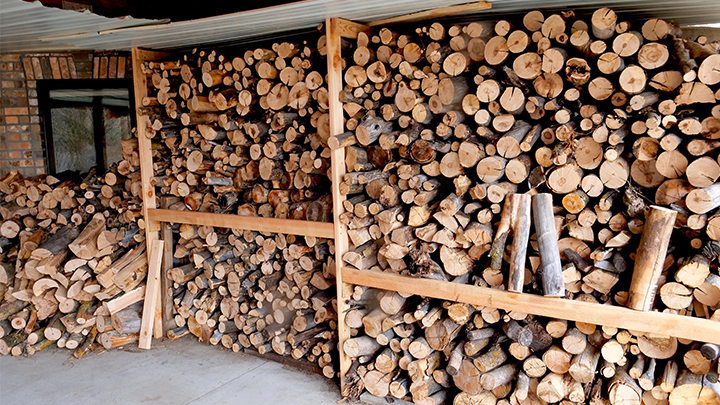
Even our adult kids have discovered a refuge on the ranch, a safe, quiet escape from the stresses of city life. They have a place to practice shooting on their time, their way. They can hunt grouse, pheasants and deer with no trespass fees, no guide fees, no competition. They help can fruits and vegetables, put up venison and firewood, repair barns and fences, and make their own connections to the land that may someday feed and shelter them.
We anticipated all this, so while shopping for our country place we drew a two-hour circle around our grandkids' location then crossed out various slices of the pie based on population density, terrain, habitat, zoning laws, etc. before investigating actual properties for sale.
If your own kids are still at home and in school, you’ll need to factor that in. Ditto your jobs. Virtually every place in the U.S. has access to schools, rural kids generally catching a bus to classes. Some families prefer to home school. Jobs are increasingly done from home. If your boss won’t permit this, you can investigate options. Rural residents are creating careers out of blogging, selling garden produce and livestock, training dogs and horses, boarding pets, and even providing storage space for RVs, boats, and other seasonal toys. Growing your own food and making your own energy can reduce the need for two outside jobs.
Hunting for Hunting
With basic location and political considerations addressed, hunters should search for the best places to hunt and shoot. Bigger spreads make this easier, but the right 5 acres in the right area could work. I’ve owned country property as small as 6 acres on which I could and did legally shoot. But I had good neighbors. The smaller your place and the closer the neighbors, the greater the chance you’ll be shut down or harassed. Local laws, traditions and political leanings will play a big roll in this. People tend to coalesce around communities that reflect their values. I might be off base here, but I’m going to guess backyard shooting ranges near rural Boulder and San Francisco are not common. Like attracts like. Gentrified rural areas might not be tolerant of hunting or hunters.
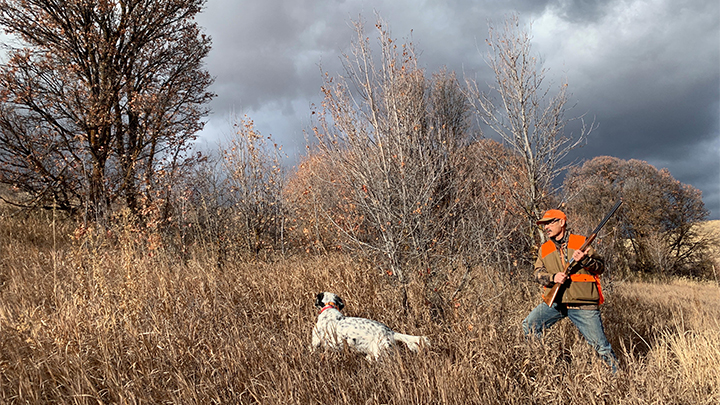
Most frustrating during our search were subdivisions. A rancher or real estate “developer” would carve a wild, empty ranch into 10-, 20-, 40-, even 80-acre chunks big enough to accommodate shooting ranges, crop fields, habitat manipulation and wildlife restoration—but saddle them with covenants and restrictions prohibiting hunting or discharge of firearms. Some prohibit livestock, horses, even the number of dogs you can harbor. I’m sorry, but what’s the sense in owning land if you don’t also own the freedom to enjoy that land? Read the fine print.
Cruising potential rural areas is a great way to get a feel for the area. Stop and talk to folks along the roads. Visit local cafes and corner quick stops. Drop in at farms advertising anything for sale regardless whether you want it. You’re shopping for culture, personalities, neighbors, information.
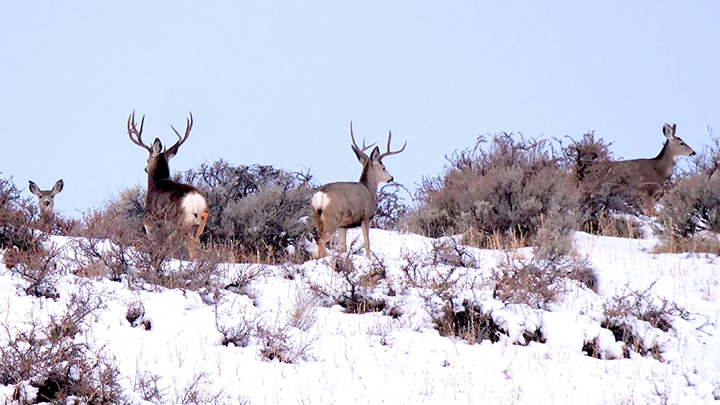
A local real estate agent isn’t mandatory, but can be darn helpful. Find one who gives you good vibes then spell out what you must have. This saves everyone time. But also be willing to fudge on a few things. Insisting on no fewer than 30 acres might keep you from seeing 25 acres surrounded by a wildlife refuge.
Critter Potential
To a hunter, nothing inspires a sale faster than a herd of deer cluttering the driveway or a flock of pheasants flushing in the back yard. But don’t let the absence of wildlife turn you off. Research species and densities in the area. The state F&G should have statistics. Is the region famous for big deer, lots of elk, massive moose, abundant waterfowl? Did the region once host quail, pheasant, ruffed grouse, sharptails? Are there red fox, bobcat, black bears, mountain lions? Could there be?
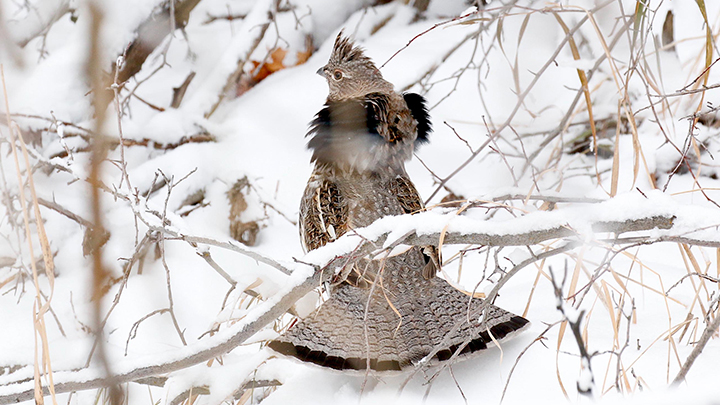
A big lure with rural land is its potential for growing wildlife. Many hunters spend more time planning and planting and building to foster wild critter populations than they do hunting them. We certainly do. You’ll want to eye the ground with this in mind. In addition to seeing the fields, their slope and soils and shade and biotic communities, you should consult state or county agricultural agents or the U.S. Department of Agriculture and its Natural Resources Conservation Service. They’ll have information on soil types, frost zones, traditional crop production, potential for government cost sharing and conservation programs like CRP. Neighbors, particularly old farming families, could have a wealth of information on rainfall, winter weather, snow depths, drought frequency, crop traditions, wildlife migrations and more.
State F&G agencies could have information on co-op programs that might help you improve cover for a variety of species from waterfowl to upland birds to big game to butterflies. Conservation organizations like the Rocky Mountain Elk Foundation and Pheasants Forever might have easement programs or cost-share habitat initiatives to help.
In dry regions water will be an overriding concern. Will you have enough snow and rain to grow your crops? Will you have irrigation water? In most of the dry West, irrigation water is tightly controlled and you cannot even install ponds or small dams on drainages. Investigate closely. You may need to install wildlife guzzlers to capture runoff.
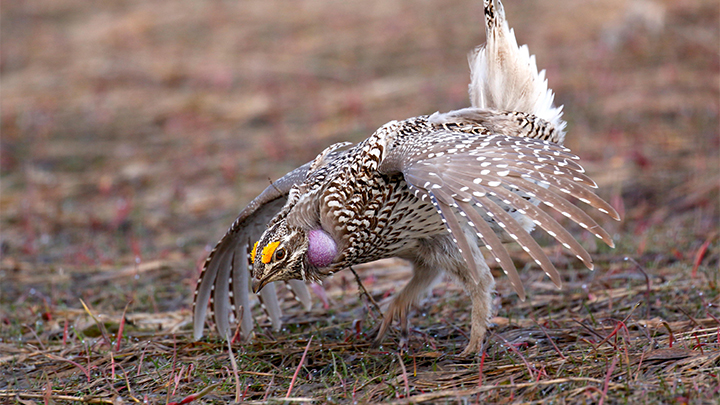
Habitat improvement can often restore species like cottontails, quail, pheasants, even deer, but consider how many acres are needed for this. If your land is small and surrounded by dismal habitat, your chances for big numbers of game go way down. You might want to search for land bordering or at least within a mile or so of good habitat. A public game management area, national grassland or forest, etc. can add significant species diversity and density to the area. Birds and mammals produced on that land could travel to yours for prime forage or to escape heavy hunting pressure seasonally.
We are fortunate to be surrounded by a mix of national forest and private ranchland well managed with a mix of native plants and small crop fields. One neighbor’s irrigated fields feed dozens of deer during drought months, keeping numbers up for miles around. In return, our dense nesting cover produces pheasants, sharptails and Huns while the higher national forest supports ruffed grouse, moose and elk.
Infrastructure
While the land will command most of your attention, be sure to check the infrastructure that could enhance or thwart your plans. Where will you get your power and water? Will crops depend on rain or can you irrigate? Will you depend on community water supplies or have a spring or well of your own? Is there power on site or will you have to bring it in or make your own? Does the area have good cell service? What are your options for radio, TV and Internet service?
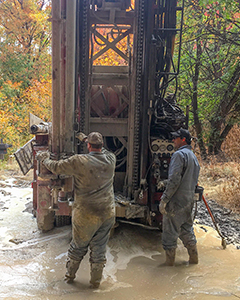
Check building codes, too. If you’re anticipating a barn, livestock, a dog kennel, be certain there are no township or county restrictions.
Distressing though it is to consider, do look into any potential industrial activity in the area. There may be plans for a new shipping distribution center just down the road. Someone may have mining rights just across the fence. Are there any old mines nearby leaching heavy metals into the water table? Are there upstream livestock operations with leaching wastes? What’s the potential for industrial level livestock production and attendant odors? Is your land in the way of a new high-power electricity transmission line or wind turbine farm? Typical, small-farm livestock and crop harvest odors are part of country living, but large, highly concentrated feedlots or slaughter facilities upwind could make life unbearable. Heavy equipment noise at a simple gravel mine a mile away might drive you nuts. You can’t predict or guard against all changes, but you can at least avoid moving next door to a coal strip mine or bikers’ strip club.
Long Term Outlook
Finally, take the long view if you have time. The old saw about land is, “They aren’t making any more.” With the exception of some volcanic islands, that’s true. Land values, long term, almost always go up. If you find the perfect spot but can’t afford both it and a house, consider getting the land and building later. Many people install a simple shed or RV from which to work and play while saving for the house, barn and other improvements. Young friends of ours bought a place with a dump of a house, made do for 10 years while saving, and then built their dream house on their dream land.
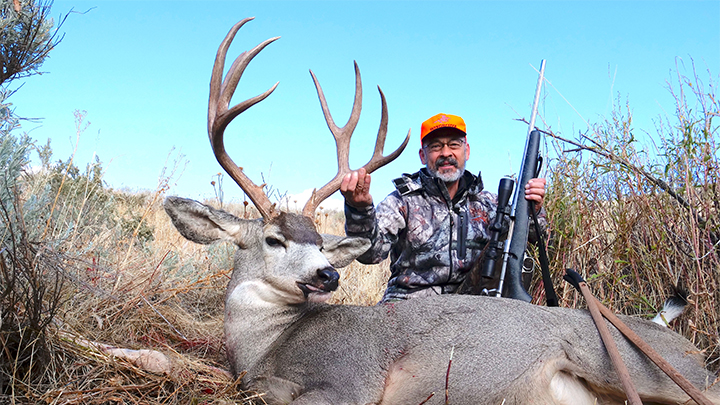
Look at expenses too. Property taxes on a rural place could be half or a quarter of what you pay in town. You might save on water, trash and recycle fees, HOA fees, landscaper fees and more. Renting out some of your property for pasture or haying could cover the taxes, maybe even make you money. You might be able to sell some mature trees while opening the understory for better deer forage.
At the least start a “dream land” savings account and fuel it religiously. Give up some of the extras you don’t really need. Beer, coffee, manicures, new motorcycle, all the streaming digital services … . Live frugally. Keep your eye on the prize. Land can come at a steep price. It can demand lots of maintenance, blood, sweat and tears.
My wife summed it up nicely: “The hassles, pitfalls, work and worry melt away when you’re stalking through your woods to your fields where the birds and bees and bucks are waiting.”


































